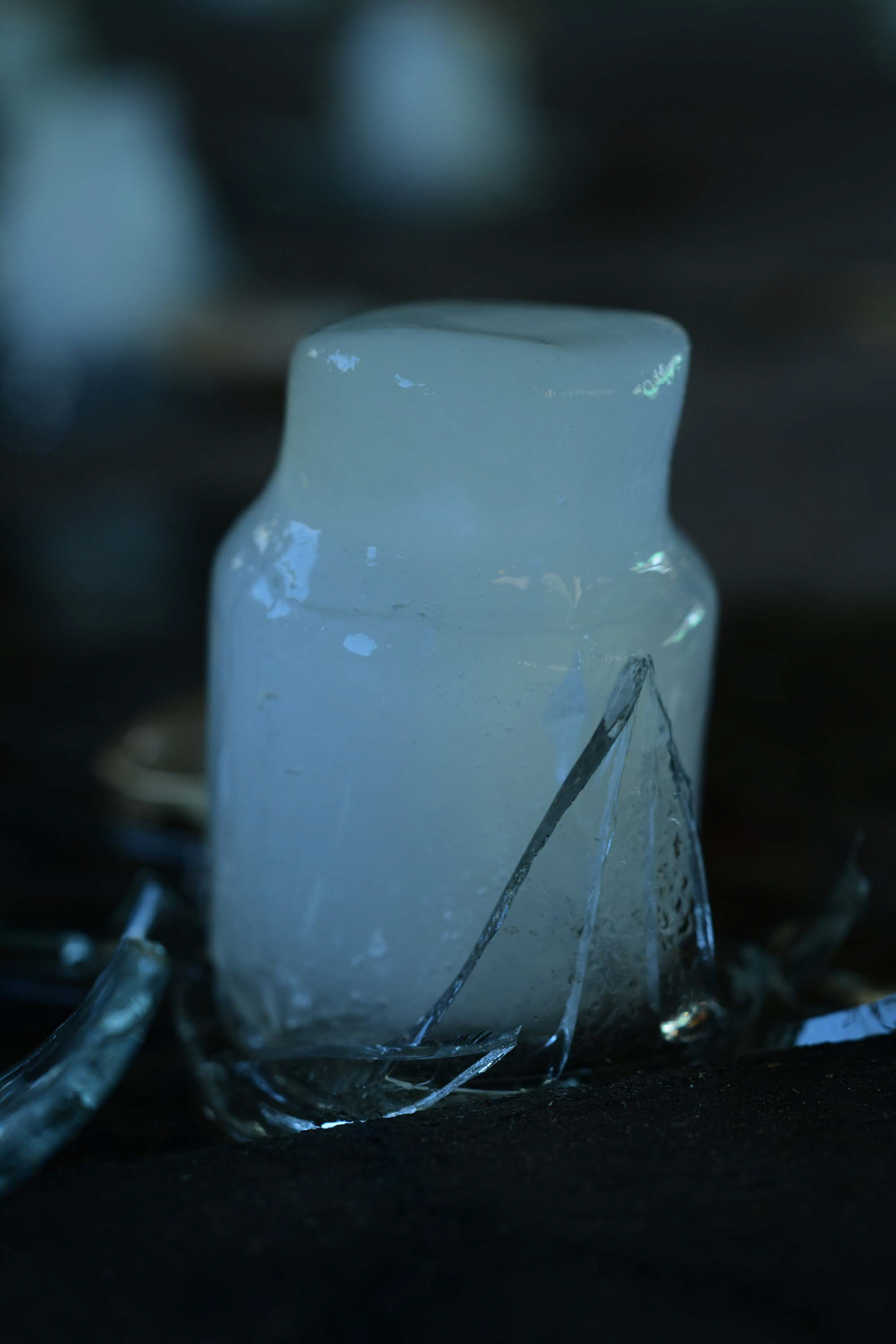
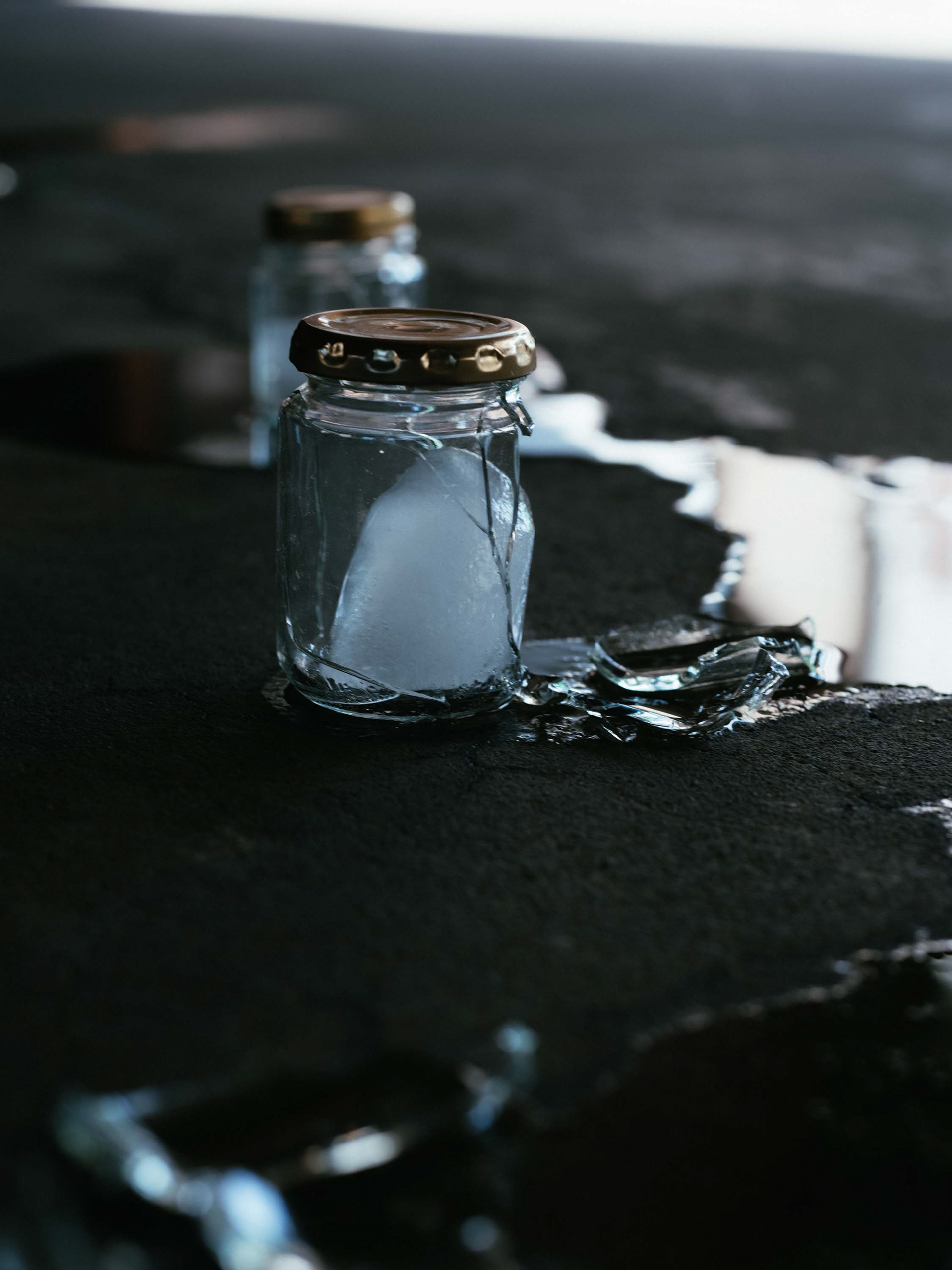
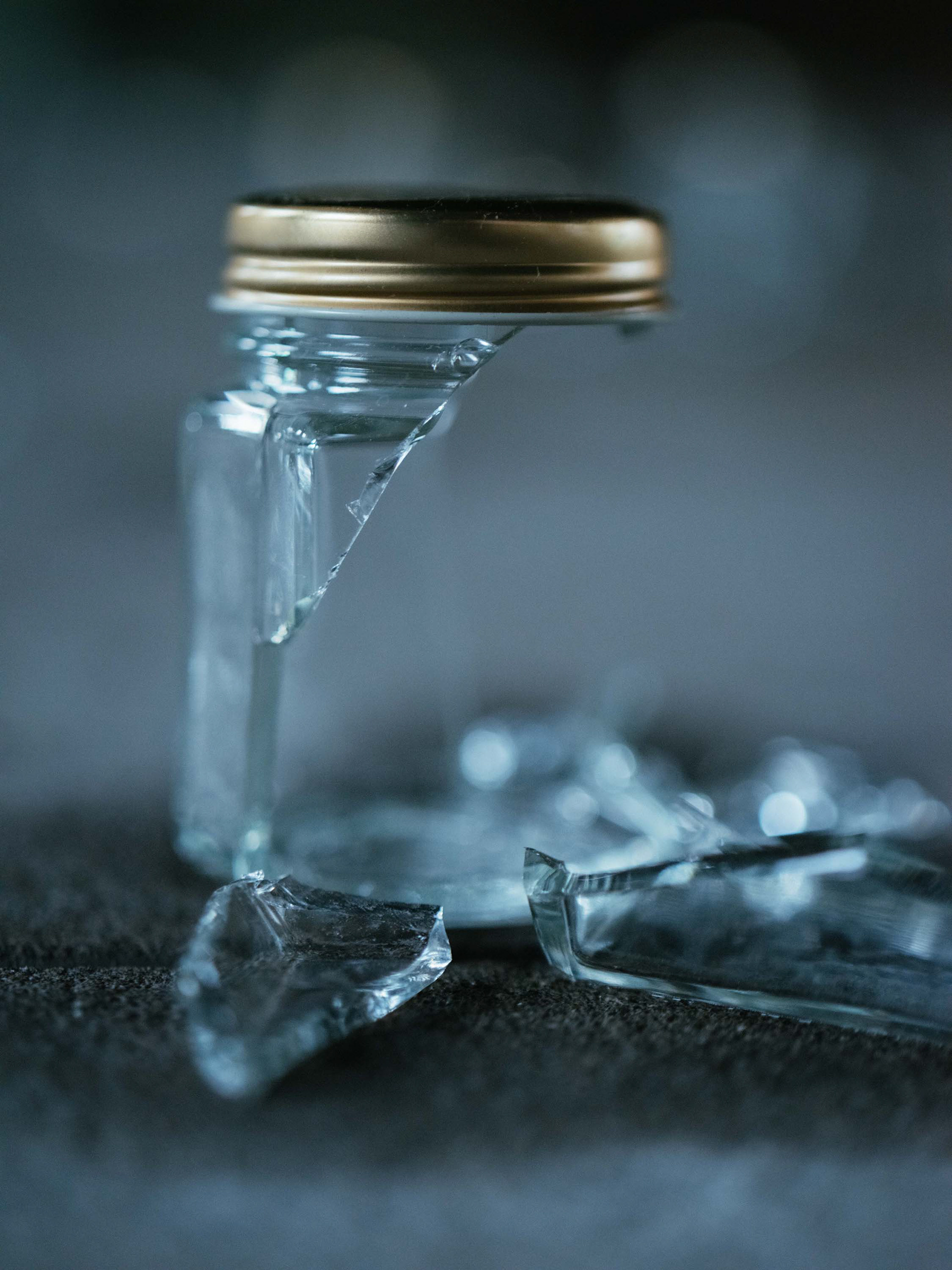
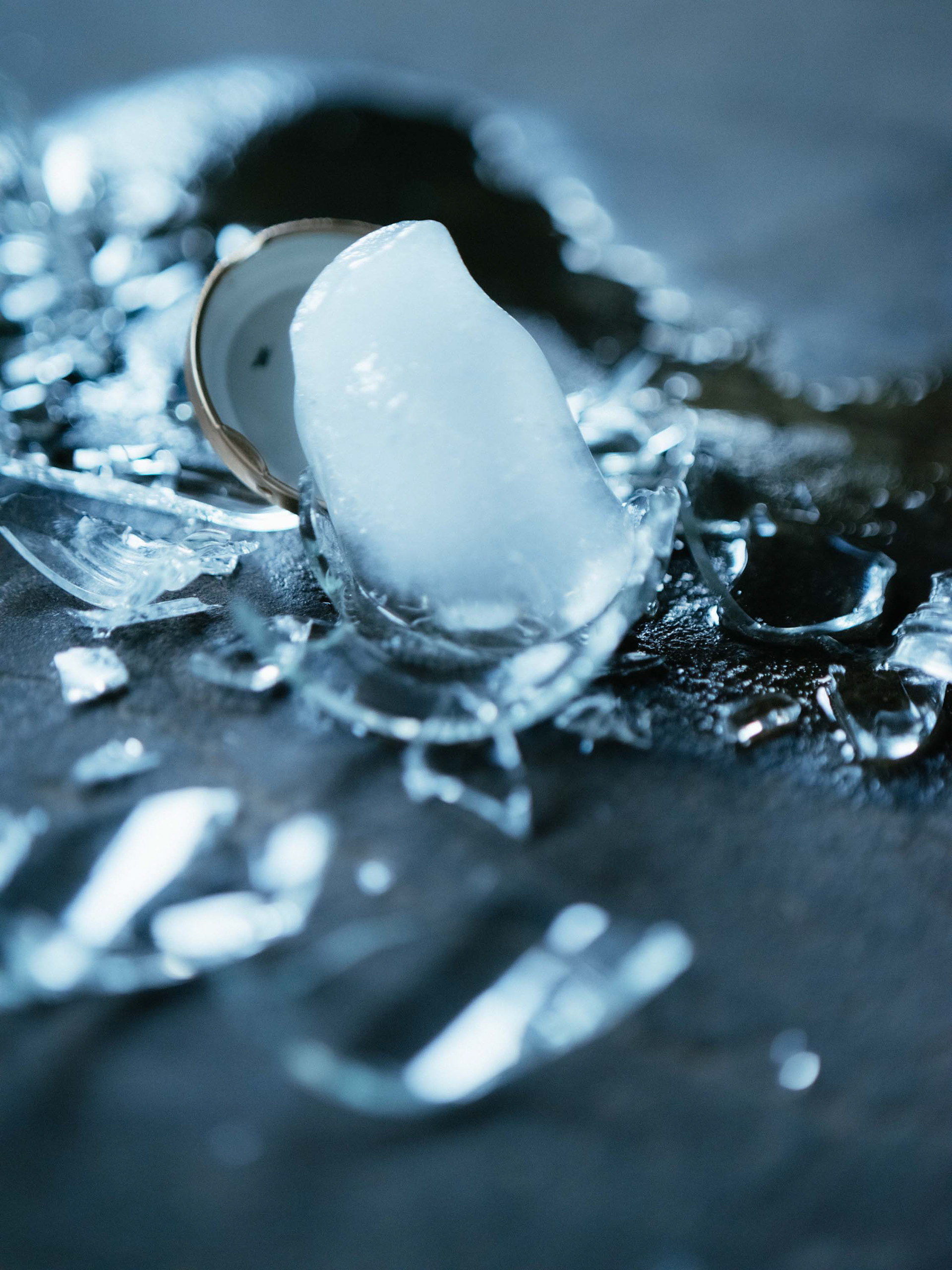
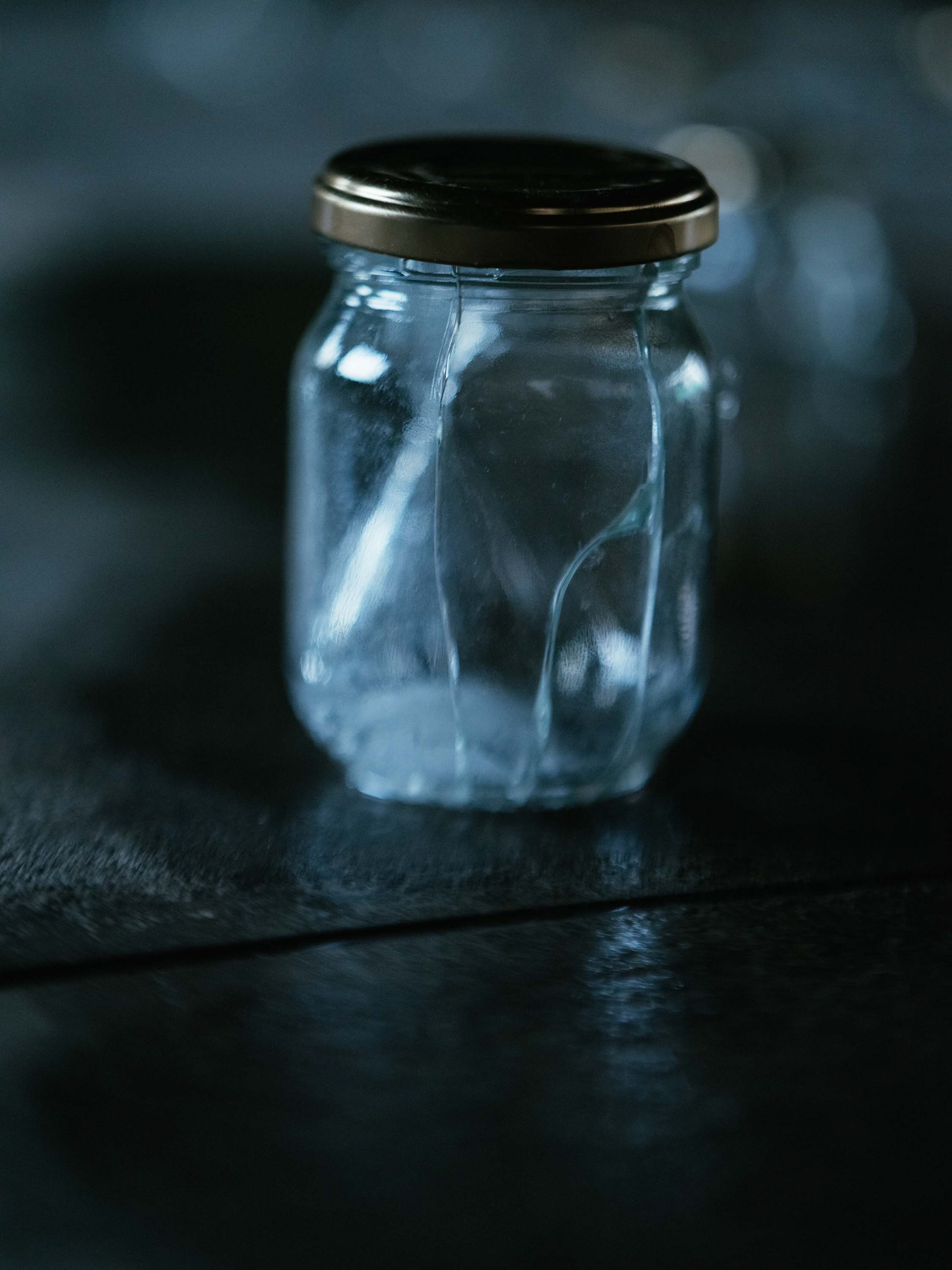
Installation, SUMIDA EXPO 2022/ BOSAI ART AWARD Rainwater, glass jar 2022 Water is an element very familiar to us, and undeniably vital for human existence and life itself. The gentle murmur of a river evokes nostalgia. The glistening dew on park leaves after a rain never fails to inspire admiration. Yet water can reveal an alternate aspect, too. I recall a friend who lost her father to the sea. To this day, she cannot face the ocean. I grapple with comprehending how the babbling brook, the dew-kissed grass, and the ocean's waves are all manifestations of the same water. Once, in Sumida Ward, stood a decaying wooden "Rojison" – a reservoir collecting rainwater for emergencies. Witnessing raindrops gradually erode solid form, I rekindled a nearly forgotten reverence for nature's might. Sumida's history is interwoven with water, nurturing industries along rivers and weathering the toll of floods. Moreover, during the Jomon period, the Sumida area was submerged beneath the sea. With global warming, this fate could recur. A history of diverse disasters shapes the region, propelling people to confront challenges and craft resilient communities. Everything with form is destined to shatter. Can we embrace the notion that all things eventually conclude? Seeking to reaffirm the terror and beauty encompassed by "water," I harness the expansive force of freezing water within a bottle to rupture it from within. Each shattered bottle stands as a unique testament, illustrating water's pulsating existence. Ice, momentarily warped into a tool, serenely metamorphoses back to its original state, permeating floors and evaporating into air. Its presence often fades from immediate consciousness, yet the lasting remnants are the misshapen bottles. Reality demands only silent contemplation. Breathing in awe of nature, I acknowledge that inevitably water will meld into my very being. -- 水。それは私達にとってあまりにもありふれた存在であり、人間にとってそして生命にとって不可欠な存在である。川のせせらぎを聴けばどこか懐かしい気持ちになり、雨上がりの公園では葉に留まる露一つ一つの輝きを見過ごせずにはいられない。しかし水は時に我々に牙を剥く。高校時代の私の友人は、父親を海で亡くした。彼女は未だに海を直視できないと語る。川のせせらぎも、葉に留まる露も、大海原の波も、同じ水であることをどのように捉えるべきか分からない。 一寺言問集会所(墨田の地域の集会室)扉のすぐ傍に嘗て存在していた木製の路地尊(雨水を貯蓄しているタンク)が朽ちてその姿形を崩していったことを知った。一滴一滴の雨粒が形在るものを崩壊させるということ。忘れかけていた水への畏怖の念を、自分の感覚をもって再認識させられた。 また、縄文時代に墨田の地域は海の底にあったこと、地球温暖化により再びその可能性があること、川の周りに産業が発展すること、氾濫の被害、墨田の歴史は水と沿うようにつくられてきたことを知る。水害だけでなく様々な災害の歴史を持つ地域であり、人々は如何にそれを避けるかという問題と向かい合い、街をつくる。 形あるものは必ず壊れる。 私達は物が壊れていくことをただ受容することはできないのだろうか。 私は 「水」 という物質に内包する恐ろしさを、そしてその美しさを、自ら再確認するため、水が氷になる際の膨張力を利用し瓶の内側からそのボディを破壊させる。砕けた瓶にひとつとして同じものはなく、水が生き物であることを感じざるを得ない。凶器へと姿を歪めた氷はまるで何事も無かったかのように、ひっそりと、時間をかけて再び水へと変容し、床に染み入りながらも私達の目に見えない空気の中へ蒸発する。そしていつの間にかその存在は記憶の端に追いやられるが、それでも確として残ってしまうのは、姿形を崩された瓶の容貌である。 何かを変えるには私はあまりにも微力で現実を静かに見つめることしかできない。いずれその水が私の身体の一部となることを想いながら自然への畏敬の念の中でただ息をする。




